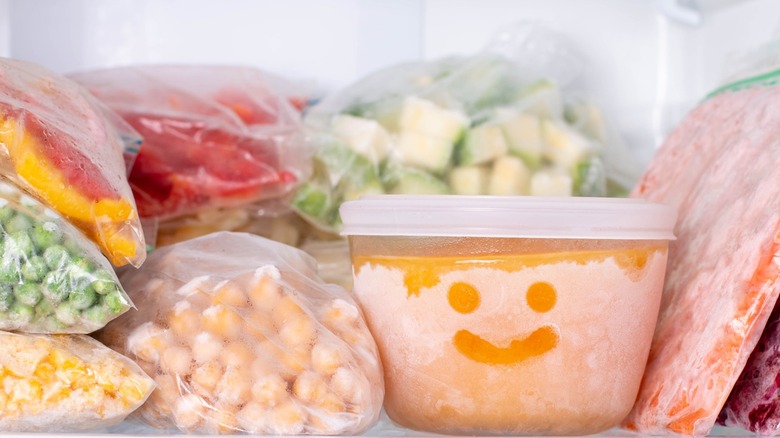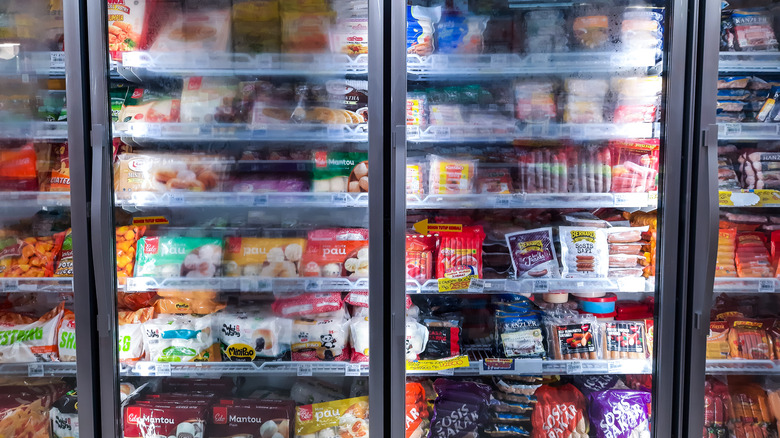The Ancient Origins Of Frozen Food
There's no denying that frozen food adds an element of convenience to your daily dining, with endless options available at your local grocery store. There are frozen meals that are worth your money, like Lean Cuisine's calorie-conscious take on mac and cheese, and others you should avoid at all costs, like the baffling Jimmy Dean's pancakes and sausage on a stick. While you probably have your own favorites, have you ever wondered who decided that freezing food would be such a great way to preserve it, and when it started becoming common practice? It turns out, you have to look far into the past for that answer.
Around 3000 B.C., individuals in China stored food in ice cellars to preserve it throughout the winter. The ice was thought to have been cut in December and stored in vessels called "Ice Jian" that were wider at the top than the bottom, with a small drain to help disperse water. There are references in the Song and Yuan dynasties to the consumption of ice and frozen food, suggesting these cellars, referred to as Lingyin, were used for centuries in China. The Romans had a similar practice, innovatively using compressed snow to keep their food cool. The laborious process started with transporting ice from the mountains and placing it into pits that had been lined with wood and straw — though those materials may not seem like the best insulators, these pits were actually able to preserve ice for several months.
Ancient innovators — and the roots of quick freezing
A few thousand years later, around 400 BC, the Persians added their own twist to ancient freezing methods. Like the Romans, they headed to the mountains in the winter to gather enough ice to last for the months to come. The deep underground storage spaces they deposited these frosty finds in, though, were topped with large mud brick dome structures called Yakhchāl, which provided added insulation.
These ancient approaches helped keep food frozen through the warmer months, but it's actually across the pond in North America where the process known as quick freezing is thought to have been perfected. A man by the name of Clarence Birdseye (yes, the founder and namesake responsible for the Birds Eye brand of frozen foods) noticed an intriguing traditional preservation method — locals were freezing fish after they caught it as a way to preserve it. Most impressively, after sampling some of the thawed fish, he realized that the taste was also preserved, something that wasn't the case with other freezing methods. That's because quick freezing involves, as the name suggests, freezing items almost instantly so that the ice crystals in the food remain small. Small, uniform ice crystals help to maintain a food's texture, flavor, and nutrients. It wasn't an overnight revolution — Birdseye made his initial observations around 1912 and didn't patent a freezing machine until 1927 — but his popularization of the quick freezing process paved the way for the modern-day frozen foods industry.

